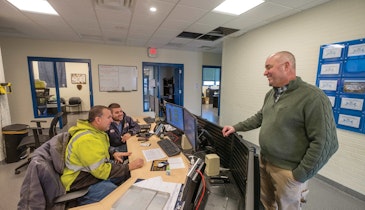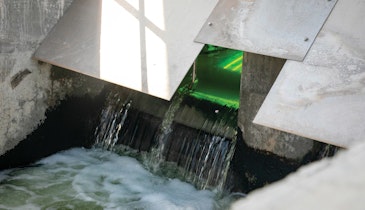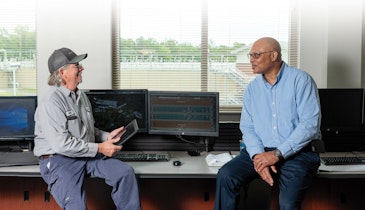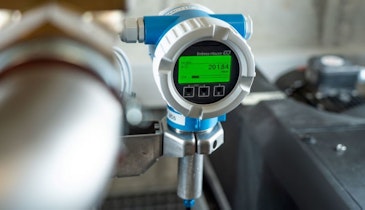Drinking water treatment plants face the ongoing challenge of optimizing the efficiency of their processes to adapt to new water quality regulations. The transposition to Council Directive 98/83/EC limits the permitted concentration of polyacrylamides used as flocculants in the settling process.
A plant in central Spain with a treatment capacity of 1.5 cubic meters per second has two lamella clarifiers for the treatment of purge water and water used for filter backwashing, sending the sludge directly to a centrifuge. There were two centrifuges that run almost continuously and use polyacrylamides as flocculants.
The purging of the clarifier was conducted using time-based cycles adjusted periodically by the operator. This often resulted in highly variable purged sludge: there were periods where a high concentration of solids created mechanical problems that required the clarifier to be emptied, and other periods where the drawn-off sludge was highly diluted, making the dehydration process very inefficient.
In order to address this problem, the plant manager was evaluating two possible approaches: purchase a third centrifuge to use starch as an alternative flocculant or look for opportunities to optimize the existing clarifier purging process.
Solution
The Sonatax sludge level probe was proposed to automate the removal of sludge from the clarifiers. This probe uses an ultrasonic pulse to determine the sludge level from the water surface or the sludge height from the tank floor. The first issue to be resolved was the location of the probe, which requires a space with no obstacles along its vertical to correctly determine the level. The probe was situated over the clarifier’s sludge collection hopper, where the settled sludge is at its highest level. Despite being located over the sludge collection mechanism, probe measurements are not altered when working with sludge levels higher than the sludge scrapers. The Sonatax probe is programmed to also determine shadow areas that prevent interference from obstacles situated at known heights in the tank.
The measurement obtained was used to determine when to start sludge removal periods. The duration of these removal periods was time-based. The system was tested to determine how it functioned with both polyacrylamide-based flocculants and starch-based flocculants. The starch produced a less dense floc, which creates turbulence in the sludge removal process that can cause measurement errors in the Sonatax probe. To prevent this, it was determined that, once the purge had started, based on the level indicated by the Sonatax, the programmed purge time would start. An inhibition period would then be maintained, which would enable the turbulence generated during the purge process to be eliminated. The programmed sequence involved one minute of purging and five minutes of inhibition. The purge time needs to be adjusted for each clarifier based on the conditions of the process.
The Sonatax sludge level probe enables the sludge removal cycle in lamella clarifiers to be automated, thereby achieving optimum sludge concentration results at the centrifuge inlet. These optimum results are achieved with different electrolytes by adjusting the sludge level at the start of the purge, based on the floc density obtained. Starch produces a lighter floc and the sludge level needs to be kept lower than when using polyelectrolytes to prevent the sludge from lifting under high hydraulic loads. Both types of flocculant significantly improve the stability of the removed sludge, with an increase in the concentration of solids.
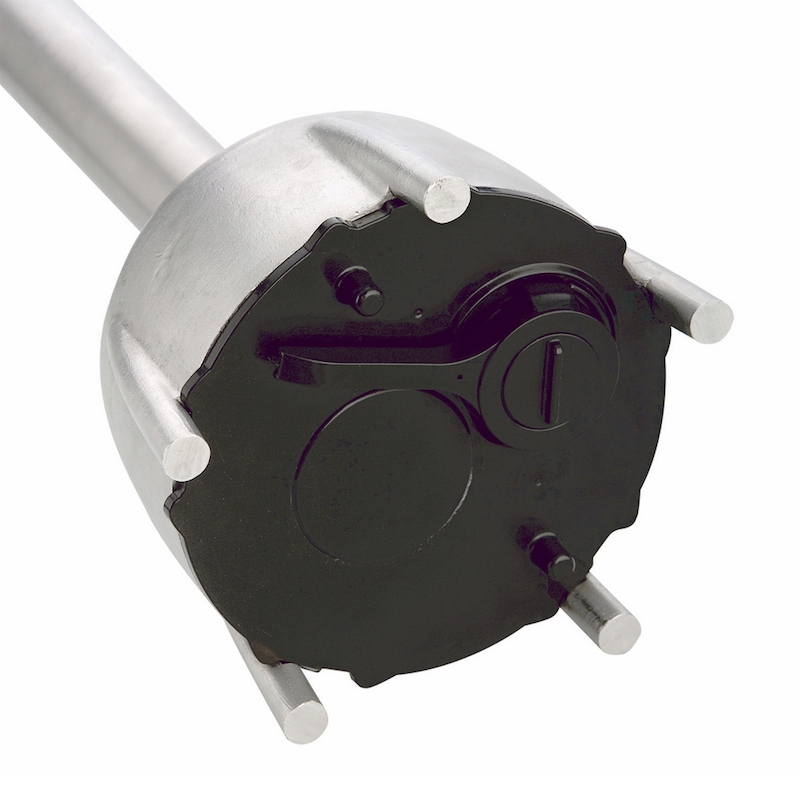
Thanks to automatic purging control, the settling process adapts to the hydraulic load, thereby preventing the accumulation of solids around the plates and thus reducing the amount of maintenance needed. The increased concentration of the drawn-off sludge enables a 50 percent reduction in the centrifuge operating time. This makes expansion of the dehydration system unnecessary when changing the type of flocculant and significantly reduces the energy consumption of the current centrifuges.
For more information, visit www.hach.com.
